Dave Reynell has lived in the South African coastal town of Knysna most of his life and worked there as a conservation forester, managing the rain forests. The town lies on the edge of the Knysna River estuary and Dave’s home is on Leisure Island, one of the town’s two causeway-connected islands.
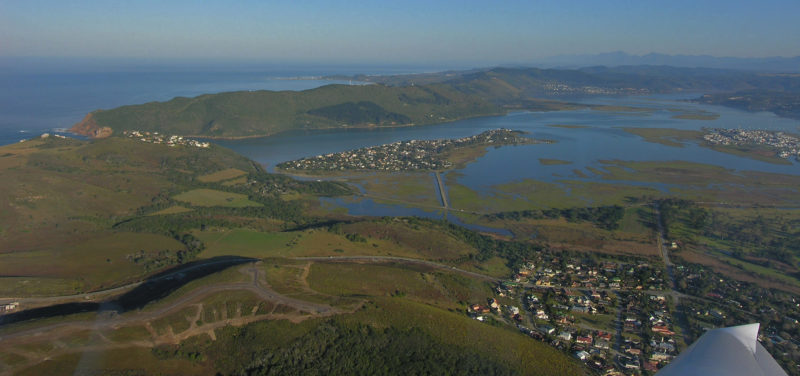 Edward Reynell
Edward ReynellDave’s home is on Leisure Island, center, surrounded by the Knysna Estuary and just a short distance from the Southern Ocean, left. This photo was taken by son Edward while flying a glider.
Surrounded by water and with the Southern Ocean just a mile away through a narrow passage, known as the Knysna Heads for the tall rock prominences that loom over it, Dave naturally took to boating. For years he sailed a 12′ Extra dinghy, which could do 15 knots on a broad reach in a good breeze. Dave sold the Extra in the mid -’90s, and when he saw Maynard Bray’s article on Iain Oughtred’s Acorn Skiff in WoodenBoat No. 56, the 11′ 8″ lapstrake Whitehall type kindled in him a desire to build a boat. He ordered the plans but never got beyond that first step—he worried that the project was beyond his skill level—and filed the plans away.
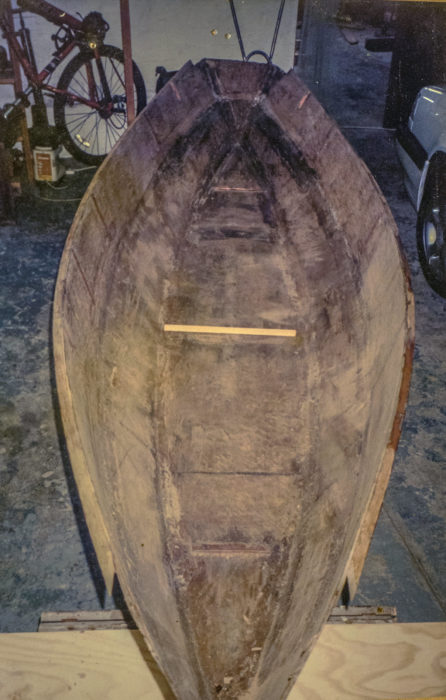 Dave Reynell
Dave ReynellStripped for repair and refinishing, the dory needed new wood where the stem and transom rested on the ground and rotted. The boat was only 12 years old but badly aged by neglect.
Still, the desire to have a boat stayed with him. A few years went by and he got word that someone had left a small wooden boat at a local boatyard. The boat was in terrible shape, but Dave saw its potential, and bought it from the yard. The hull had been covered inside and out with a shoddy layer of fiberglass and polyester resin that had begun to peel away. To keep the boat from rotting away it all had to come off. Dave stripped the boat down to bare wood, and then suspended it from the ceiling of his garage to dry out. He left it there for four years, likely because it took him that long to let go of his aspirations to build the Acorn.
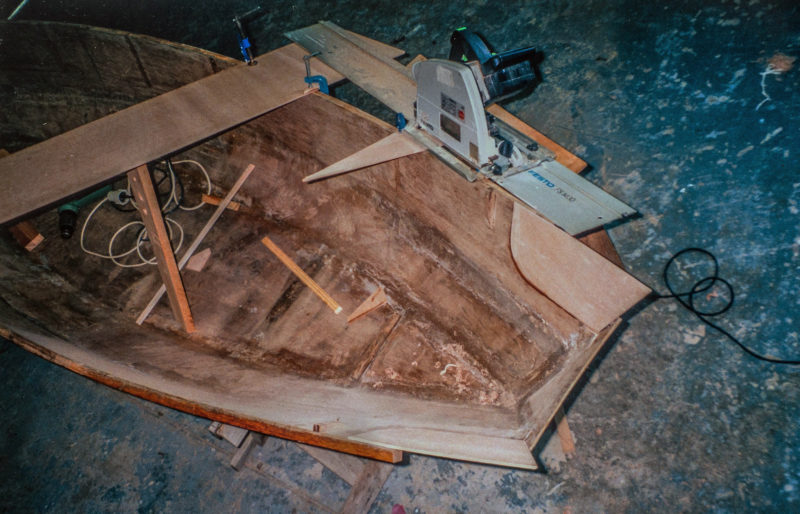 Dave Reynell
Dave ReynellRepairs included patching the transom and the upper corners of the plywood sheer planks.
Dave learned that the boat had been built in Knysna by a well-respected family-run boatyard called Lucky Bean Marine. It was a 12′ dory designed in 1947 by Francis Kinney. Kinney is best known for revising Norman Skene’s 1904 classic, Elements of Yacht Design. Skene himself had revised the book several times, and Kinney continued the updating between 1962 to 1973. Kinney included the lines and offsets of his dory in the 8th edition of Elements.
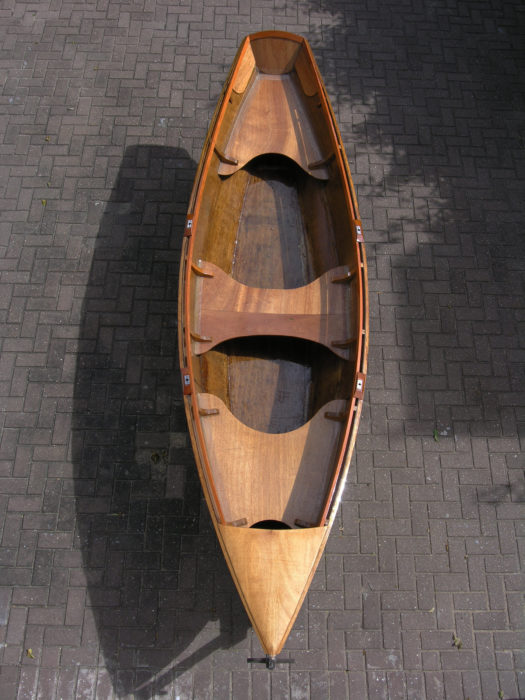 Dave Reynell
Dave ReynellNearly finished, the hull awaits floorboards and a proper pair of oars.
The pedigree and caliber of construction of Dave’s dory had been masked by the clumsy work that the previous owner had done on it. Dave removed some graceless slabs of wood that had been stuck on the bow and quarters. Fortunately, the plywood hull was still sound and Dave sealed it with epoxy. He took his time with the restoration and enjoyed the work.
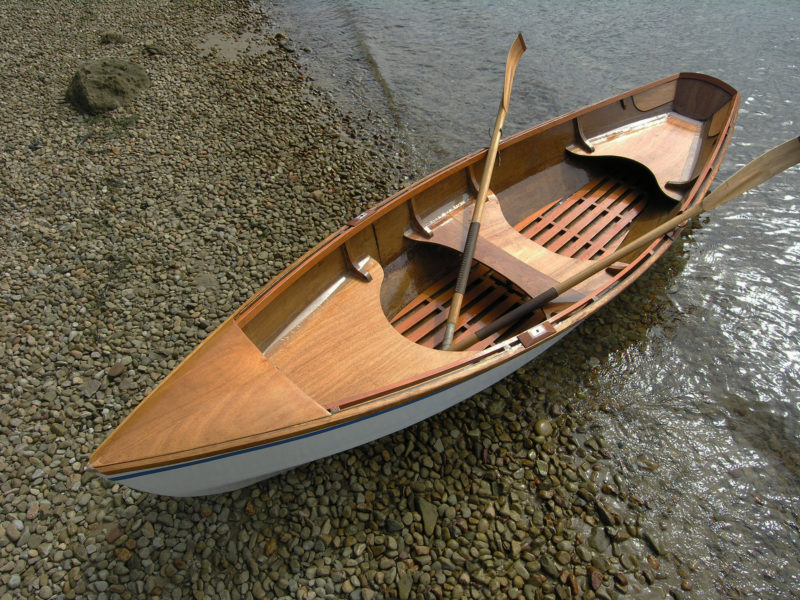 Dave Reynell
Dave ReynellRescued from a slow destruction by neglect, the dory has decades of useful life ahead.
Once seaworthy and afloat once again, the dory proved well worth saving and putting back to rights. With a borrowed pair of oars, Dave launched it and rowed across the estuary. “I could hardly believe how easy it was,” he writes. “She whizzed along doing at least 5 to 6 knots and was a dream to control. Her gentle rocker and a flat bottom enabled me to spin her around on a tickey—Americans would say ‘on a dime.’ I have also found her particularly stable in a following sea on the odd occasion that I have rowed her out of the Knysna Heads. Strictly a one-man boat, she is extremely tender, although at times I do row her tandem, having positioned two sets of rowlock-blocks on the gunwales.”
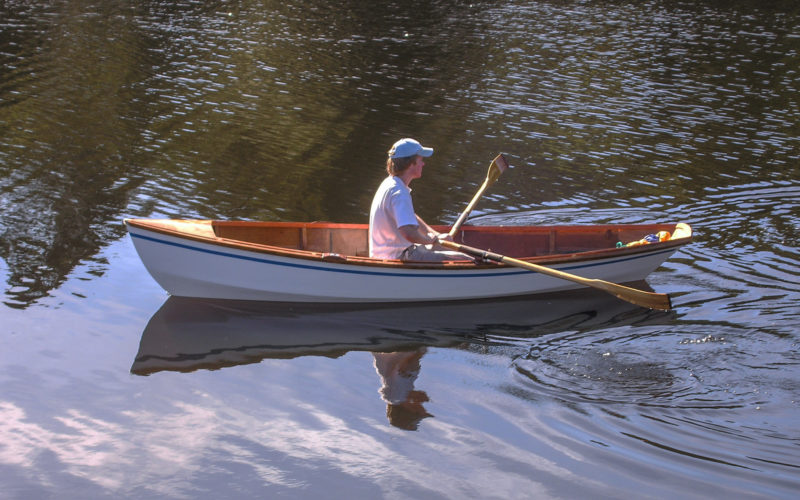 Dave Reynell
Dave ReynellThe transformed dory proved popular with the family. Here Edward is at the oars. Dave notes: “The price I paid for the dory was a lot for a little wooden rowing boat in very poor condition, but it had a good pedigree and was worth saving.”
The dory deserved a pair of well-made oars, but there were none to be had anywhere near Knysna, and sculpting spoon blades was not in the cards: “I can do a pretty neat job hand cutting and fitting dovetail joints but am clueless when it comes to using a drawknife or spokeshave.” Dave found Rich Shew’s article on making spoon-bladed oars in WoodenBoat No. 117, glued up the blanks according to the instructions, and then handed the project off to a professional cabinetmaker. The results exceeded Dave’s expectations; “He shaped the most perfect set of oars that I had ever laid eyes on.”
 Dave Reynell
Dave ReynellThis beach lies on the edge of Knysna Heads, the 1/8-mile-wide passage that separates the lagoon, to the left, from the Southern Ocean, just beyond the headland to the right.
The oars and the beautiful work Dave did on the dory were well deserved by a boat that was almost lost.
Do you have a boat with an interesting story? Please email us. We’d like to hear about it and share it with other Small Boats Magazine readers.
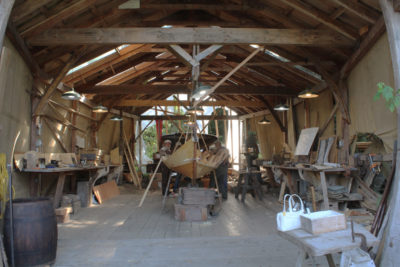
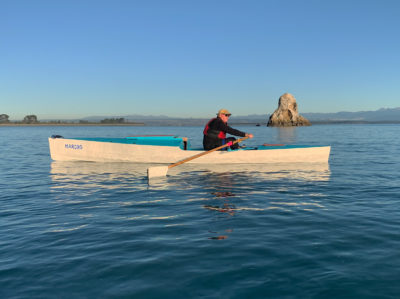
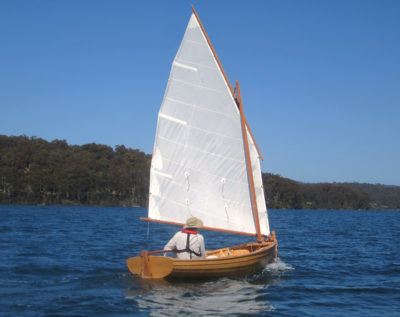
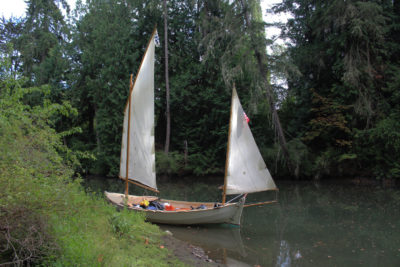
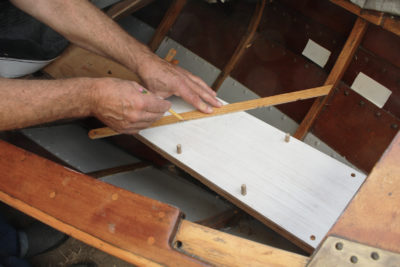

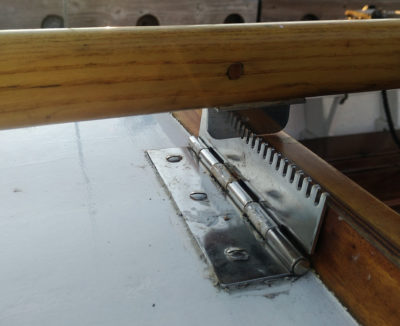
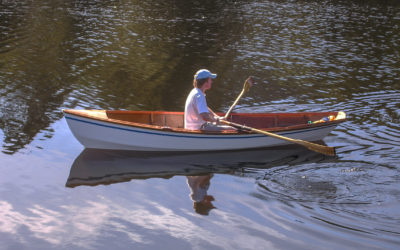
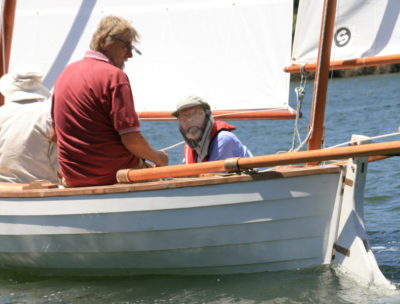
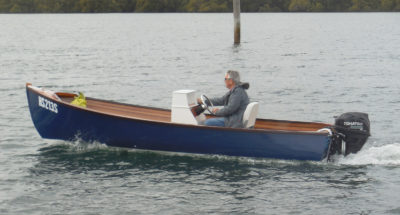
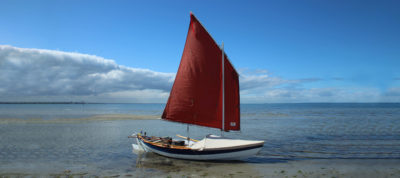
Beautiful boat, really nice workmanship. Knysna looks like boat heaven in the photos.
One more pretty boat that I would love to build, but this is probably not the right boat if I want to take my 6 y/o daughter on board every now and then.
Peter, I have often thought of finding someone clever enough to “stretch” the lines to about 14′. This would make for a perfect “two-seater”.
Thanks for your comment, Dave. It has been stretched… Check out these sites: Tacking Outrigger and MARY E. I’m also a bit worried about lateral stability—would it be safe to take a 6-year-old on board?
Apologies for the late reply, Peter. The 12 footer is very tender and when I launch her it is from a small beach, in very still and shallow water. I have to make sure that I place my left foot (I board from the port side) squarely in the centre of the hull. I then heave my right leg onboard and sit down quickly ! Part of the extra caution is due to age (79 ¾).
I have rowed two up with one of my sons who was, at the time, about 12 years of age. Not ideal as with the hull settled lower in the water there was far more “drag” when rowing.
It might be worth enquiring about MARY E, but, by the comments on the Sydney Wooden Boats website, the 14 footer should do a whole lot better, two-up, than the 12. How they managed to get the weight down to 28 kg (roughly 62 pounds) is a mystery, I’m sure my 12 footer weighs closer to 90+.
At a guess, I would think that the 14 foot version would take two comfortably. It might not be all that fast (two-up) but it would, surely, be more stable than the 12 with one on board.
I was taken by the picture of the restored Kinney 12-footer, started web-searching around, and pretty quickly got myself a copy of Kinney’s version of Skene’s book. It’s interesting that Kinney’s description of the little boat states that “The little boat is a joy to row. Her capacity is four adults, one forward, one aft, and two amidships”. I think the capacity estimates there and in the previous notes are a humorous reminder of the normal subjectivity in boat evaluations. Looks to me as if a 13- or 14-footer like the MARY E would be a wholesome and useful boat!